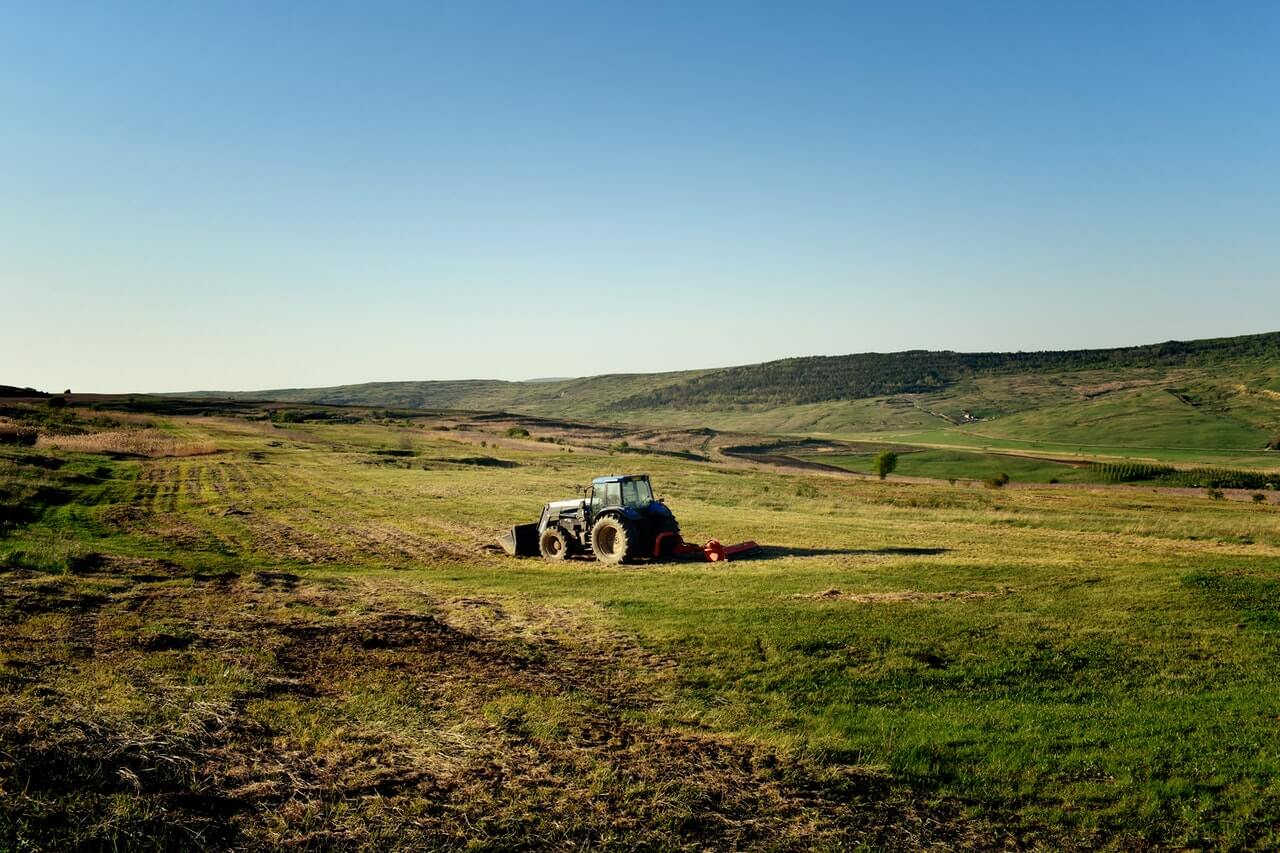When you’re preparing your land for homesteading or for use as a small farm, you’re very likely to need to clear some land. This involves removing unwanted vegetation, underbrush and “trash trees” (fast growing trees that aren’t valuable or useful) as well as removing rocks and other obstructions from the soil. The more cleared land you have, the more crops you can grow and the more livestock you can keep. In this article, we provide sound advice on how to clear land for farming. Read on to learn more.
What You'll Learn Today
- Always Start With A Solid Plan
- Make Sure Your Plan Is Doable
- Evaluate The Worth Of Your Trees
- Equip Yourself Properly
- Do The Job In One Go If Possible
- Frequently Asked Questions
- Are there laws governing land clearing?
- How can you find out about local zoning requirements?
- Does it take a long time to get a permit to clear farmland?
- What do you need to create a farm map?
- What if you can’t afford to clear all of your land at once?
- Are there alternatives to using heavy machinery to clear land for crops?
- What if your property has lots of large trees?
- How can you be sure of making the right plans for the right areas of your farm?
- How do you choose the right equipment for the job?
Always Start With A Solid Plan

Don’t just set out mowing weeds, chopping through underbrush and knocking down trees willy-nilly!
You need to look over your property, inventory, identify and evaluate what you have and decide what to keep and what to get rid of.
In order to do this, you’ll need to have a firm idea of your intentions. Do you want to clear the land for livestock grazing, crops or building barns and other outbuildings? All of these require different sorts of preparation.
For example, you might like to have a nice little grove of trash trees in the middle of your pasture, but you don’t want them in the middle of your cornfield!
On the other hand, if you have a nice big old mature tree, you may wish to make your plans around that tree rather than removing it. A good, big shade tree is an excellent thing to have next your barn, workshop or house.
Make Sure Your Plan Is Doable

Before you move ahead with your plan, be sure that it’s a practical one. Check with other farmers in the area and with your county agriculture extension to be sure that the crops and livestock you plan on keeping will do well in your area.
If you plan on growing crops or a specific type of pasture, test the soil to find out if it will support your plan. Determine what you’ll need to do to amend the soil as necessary to make it more suitable for farming.
Evaluate The Worth Of Your Trees
If you have a lot of trees on your property, identify them and determine what they might be used for.
This is another area where your county agent may be helpful, or there may be professionals in the timber industry who can give you good advice.
In some cases, you can sell your felled trees for a price that will really help with the expense of removing them. Sometimes, you may even end up with a profit.
Equip Yourself Properly

If you hire a professional service to do your land clearing, they will naturally have all of the equipment they need. If you’re going to do it yourself, you may find yourself in need of:
- A Track Harvester: This machine makes it possible to pick up trees and store them.
- A Stump Grinder: Gets rid of stumps completely once the tree has been chopped down.
- A Good Brush Mower: This is useful for mowing tough underbrush
- One or More String Trimmers: Your standard weed eater.
Clearing land is hard work, and it’s darn near impossible if you don’t have the right equipment.
Do The Job In One Go If Possible
Preparing to clear farmland, planning, gathering equipment and doing the actual work is a major undertaking.
For this reason, it’s best if you can determine your overarching plan right from the start and clear the land you need all at once. This will save you money, time and effort.
Once your land is cleared, you can move forward unhampered to carry out your plans. You’ll find it’s much easier to get things done when you have unsightly underbrush, trash trees, rocks and other obstacles out of the way.
Additionally, having your land nicely cleared can increase your property value.
5 Acre Homestead – DIY Clearing The Land
Frequently Asked Questions
Are there laws governing land clearing?
Yes, zoning requirements vary from state to state and county to county, so you must make sure you understand zoning restrictions and have obtained proper permits before you begin your project.
How can you find out about local zoning requirements?
When preparing to clear farm land, check in with your local USDA Farm Services office. Not only can their agents help you understand zoning requirements, they can also help you work through the process of obtaining the necessary permits.
Does it take a long time to get a permit to clear farmland?
It can take quite a while, so it’s a good idea to make this the first task on your list. Create a basic plan, talk with your Farm Services agent and submit your application. While you are waiting for the go-ahead, you can perfect your plans. Begin by creating a complete map of your farm.
What do you need to create a farm map?
While you are at the USDA Farm Services office, ask for topographical maps of your property. These maps are invaluable tools in understanding important aspects of your property, such as where waterways are located and how excess water drains off. Pay close attention to this information because it’s unwise to disrupt the natural flow of water. Doing so could cause you to accidentally create low, swampy areas or to contaminate valuable streams.
What if you can’t afford to clear all of your land at once?
Your topographical maps will help you identify uses for various areas of your land so that you can prioritize your clearing tasks. For example, if you don’t have a home on your property yet, you’ll naturally want to choose and clear a home site first. If you plan to have grazing stock, you’ll want to look at your land and your maps and identify areas that are already fairly clear and that have natural water sources. You may be able to clear these areas lightly or not at all.
Are there alternatives to using heavy machinery to clear land for crops?
With smart planning, you can save money, make money and improve your land for crops. Brushy areas make ideal grazing spaces for ruminants such as goats and sheep. These non-picky critters can make short work of brush while providing your family with milk, meat and/or fleece. Pigs are also very helpful when it comes to clearing land. After your grazers and rooters have cleared the space, you will be able to plow it fairly easily, and you’re sure to find that the soil has been greatly enriched by the presence of your natural helpers.
What if your property has lots of large trees?
Before you start chopping or knocking down trees, assess their value. Remember that just the shade and beauty that trees provide adds value to your property. The presence of trees protects the soil against erosion. Additionally, trees provide habitat for birds and many other natural helpers. These are just a few of the reasons why it’s important to understand what you have before you clear it away. Another aspect of assessment you should keep in mind is that some types of trees produce valuable lumber. For example, if you have rot and termite resistant cedar trees, there may be a local market for their wood, or you may be able to use the wood yourself to build fences and outbuildings and such.
How can you be sure of making the right plans for the right areas of your farm?
Another project you can do while you are waiting for your permits to be okayed is soil sampling. While you are in the process of planning your clearing and improvement projects, tromp around your property and gather soil samples from different areas. Soil quality can be quite different in clear areas, low-lying areas, hills and valleys. Label your samples carefully and take them to your Farm Services office for testing. Understanding the composition of your soil is important information when planning the use of your land.
How do you choose the right equipment for the job?
This is another project you can tackle while waiting for your permits. Talk with your Farm Services agent, and do a little local and online research to determine exactly what sort of equipment you need at each step of your job. Pinpointing the right tools for each phase of the project will help you make progress smoothly and safely. In the final analysis, you may find that renting exactly the right equipment for each task is a wiser use of your money than purchasing one large item (e.g. a bulldozer) which may not actually be right for all the tasks at hand.
It really helped when you said to plan out the space you want to be cleared out and if it is feasible. My uncle just bought a lot of land out in the country and he’s thinking of growing soybeans on it. He should hire a land clearing service to help expedite the process so he can start planting soon.
I WONDERFUL YOUR WORK PROCESSES TOO MUCH, Because of that I am ones of want create Business for my family to survive theirs life to as God want to them stay on the Earth, so I seeking Man to help to me by give a materials to start small farm develop it